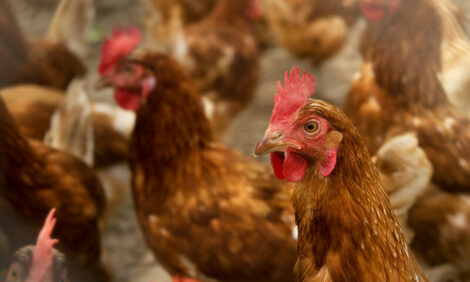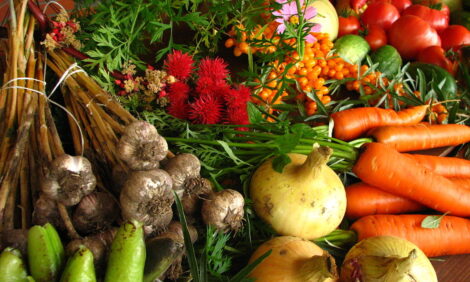



EUROTIER - Future for Eggs and Poultry in China, Russia and the EU
GERMANY - The European Poultry Club (EPC) hosted a panel discussion on the outlook for the poultry and egg markets in Russia, China and the 27 countries of the EU on the eve of EuroTier 2010, writes Jackie Linden, editor of ThePoultrySite.With renowned international speakers for the egg and poultry industries in those countries, the panel discussion attracted a very good attendance yesterday (15 November).
Following a welcome by president of the EPC, Gerhard Wagner, moderator and international agricultural consultant, Gordon Butland took the stage for his overview and introduction.
Mr Butland explained that over the last 10 years, the poultry industry has emerged from a series of crises: nitrofuran contamination in 2001, bird flu in 2003-2004 and US biofuel programmes since 2006, which caused feed prices to jump by 30 per cent to a new level from which they have not fallen back significantly. Finally, the latest economic upheavals have greatly changed the way of doing business.
Introducing the speakers, he stressed the importance of China, Russia and the EU in terms of the production and trade in poultry products.
Russian Market
Perspectives of the Russian market was the topic chosen by the first speaker, Professor Vladimir Fisinin, president of the Russian Poultry Union. He explained the importance of poultry products in his country's food security, and how huge sums have been invested in the modernisation of the industry in the last few years to boost output.
One interesting development has been the growth in the use of battery-style cages for the production of broilers in Russia. Professor Fisinin said that some of the early problems with these cages – such as breast and leg blisters – can be solved by using new materials.
Professor Fisinin went on to highlight developments in breeding, nutrition, egg processing and poultry health, which will contribute to the dramatic future growth of the Russia poultry industry, eventually supplying not only the domestic market but also broadening the country's exports.
Chinese Market
Dr Ma Chuang, general manager of the China Animal Agriculture Association (CAAA) offered an overview of the Chinese market. He explained how the broiler sector is clearly segmented between the white broilers, yellow broilers (traditional) and spent hens (used mainly for soup).
Looking to the future, he sees the challenges and opportunities for China lying in growing demand from the domestic market as both the urban population and disposable incomes rise. He also sees pressure to increase the efficiency of resource use, better disease control and a greater focus on environmental impacts.
On development strategies, Dr Ma Chuang stressed that poultry would remain an important part of national animal production. Broiler output is projected to increase at 6.8 per cent annually, with slower growth in the egg and waterfowl sectors. Products need to be developed for the young generation in the country, he added.
In answer to a question, Dr Ma Chuang said that the country's main focus is increase broiler meat production for its own population to reduce reliance on imports of poultry meat, while he saw some potential to develop an export for high-value products – such as further-processed products that are labour-intensive for Japan, the US and EU.
Perspectives in the EU
Peter van Horne from the Agricultural Economics Institute (LEI) of Wageningen University covered the status and prospects of the European Union poultry industry.
The situation is very different from China, he said. The EU's share of the global market for broiler meat is falling, as to is the level of self-sufficiency, which is now less than 100 per cent due mainly to the expansion of the EU. While exports are falling slowly, poultry meat imports to the EU are rising, especially from Brazil and Thailand.
He sees the medium-term prospects as positive with moderate increases in consumption and a small increase in output. Exports of lower-value cuts are expected to rise, as will imports of breast meat.
Mr van Horne stressed the need for fair trade, whereby the rising tide of regulation on EU broiler producers is balanced with levies to support its producers.
He went on to explain that the picture for egg production is quite different. The EU lies in second place behind China in terms of output. Consumption is stable and both exports and imports are stable overall.
In his forecast, Mr van Horne predicted a small increases in production and consumption and the possibility of rising imports of egg powder from low-cost counties such as India.
Giving an overview of both the coming EU regulations on the ban on battery cages from 2012 and of the Common Agricultural Policy (CAP) and World Trade Organisation talks, Mr van Horne concluded by calling for a balance between the three Ps – Planet, People and Profit.
Conclusions
In his conclusions, Mr Butland warned that a doubling of food production in 20 years – needed to meet the demand of a growing world population – needs to be managed carefully in order to prevent the rapid expansion leading to oversupply and a subsequent collapse of the markets. He also warned of that there would be more trade disputes in future.
Finally, he stressed the importance of innovations in order to increase the efficiency of poultry production.











